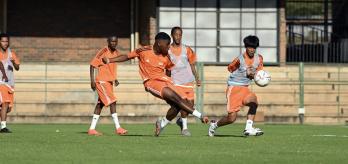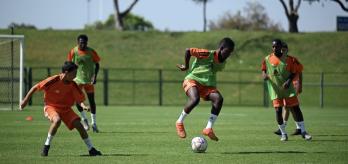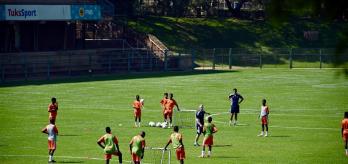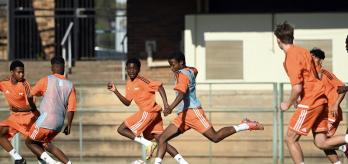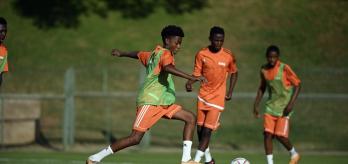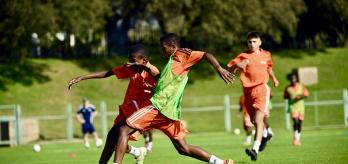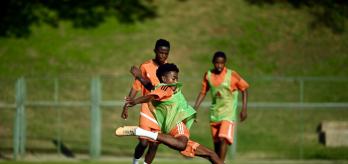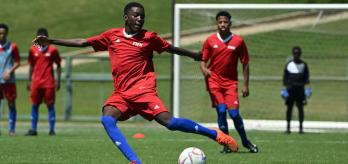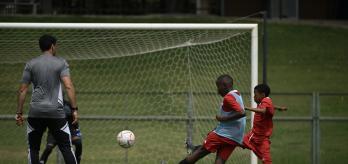Methodology
The intention: What is practised?
The objective of the exercise is to enhance a unit’s ability to play forwards quickly and to build and progress from the middle third against a high block or a mid-block within a narrow focus. There are other aspects, such as the transition to attack and defend, that also feature in the drill. The exercise focuses specifically on unit-level elements, such as the awareness of when to play the pass in behind, in coordination with the attacker’s run. The focus for the in-possession team is on quick combination play, off-the-ball movement and forward play between central players through the thirds. As for the out-of-possession team, quick ball recovery and recognising when to press are the key skills at unit level. The exercise simulates penetration into the final third, with the emphasis placed on the phase immediately after a team regain possession in the middle third.
The scale: For whom is this relevant?
The exercise revolves around the unit and focuses on the interaction and movement between midfielders and attackers in the final third. The drill allows a unit to develop its understanding of creating chances by playing passes for attackers to run on to. The exercise is particularly relevant to players who operate as a unit in central areas through to the attacking third, such as midfielders operating in the pockets of space between the lines and attackers playing on the defenders’ shoulders. In this exercise, defenders or deep-lying midfielders operate outside of the opposition’s shape to provide support options and longer through-balls for the forwards to run on to. In addition to unit-level skills, effective body orientation and spatial awareness when receiving and playing forwards are important individual skills worked on in the exercise.
The practice type: How is the practice designed?
The drill involves an opposed, small-sided game, featuring variable repetition that provides ample opportunities for a unit to practise movement to receive, receiving, shooting and passing when looking to play in behind a defence. Variations develop to showcase different options when offering beyond the defensive line, thereby enhancing a unit’s understanding of the tactical scenario. The fact that the exercise is opposed provides a realistic obstacle that a unit must overcome by using their creativity. The offside rule applies, which provides a reference against which the attackers have to time their runs. The exercise is non-position-specific, with all players rotating and performing similar tasks depending on the position they occupy within the drill.
Session plan
Organisation
-
Use half of a full-size pitch. Position a full-size goal at each end of the exercise area. Place a goalkeeper in each goal.
-
Mark out a 15x25m area in the centre of the exercise area.
-
Set up a 4v4 plus 1 neutral player – who plays for the in-possession team – inside the central area.
Explanation
-
The in-possession team aim to keep the ball within the central area until they have the opportunity to play an in-behind pass to an attacker breaking from the central area into the end zone, i.e. the area beyond the central area.
-
The out-of-possession team press and try to regain possession.
-
If the out-of-possession team win the ball back, they become the attacking team and can launch a counter-attack.
-
Once the attacker receives the ball in the end zone, they try to score.
-
The attacker can be joined in the end zone by team-mates and opposition defenders.
-
Each time an attacking move ends (i.e. when a goal is scored or the ball goes out of play), play restarts with the coach playing a ball to either goalkeeper.
-
The offside rule applies.
Key coaching points
Roles of coaches
-
First coach: demonstrates the main actions involved in the exercise and constantly instructs and encourages the players.
-
Second coach - Offers encouragement and motivation from the opposite side of the area.
-
Third coach - Not present.


























